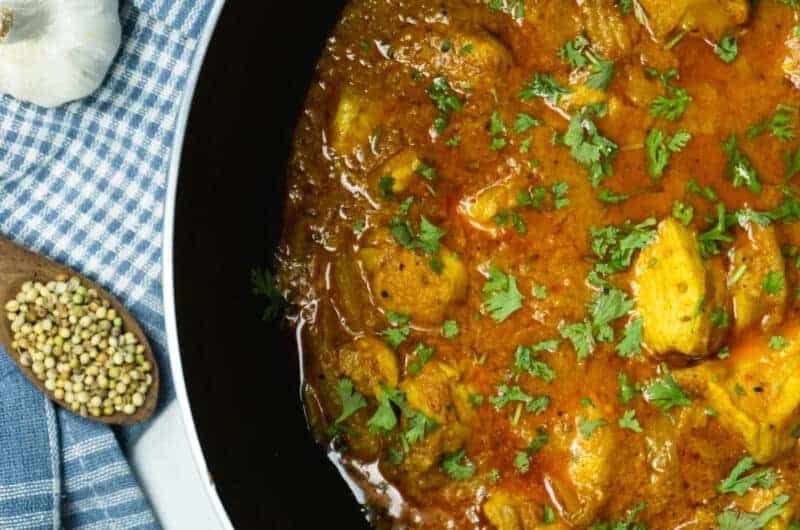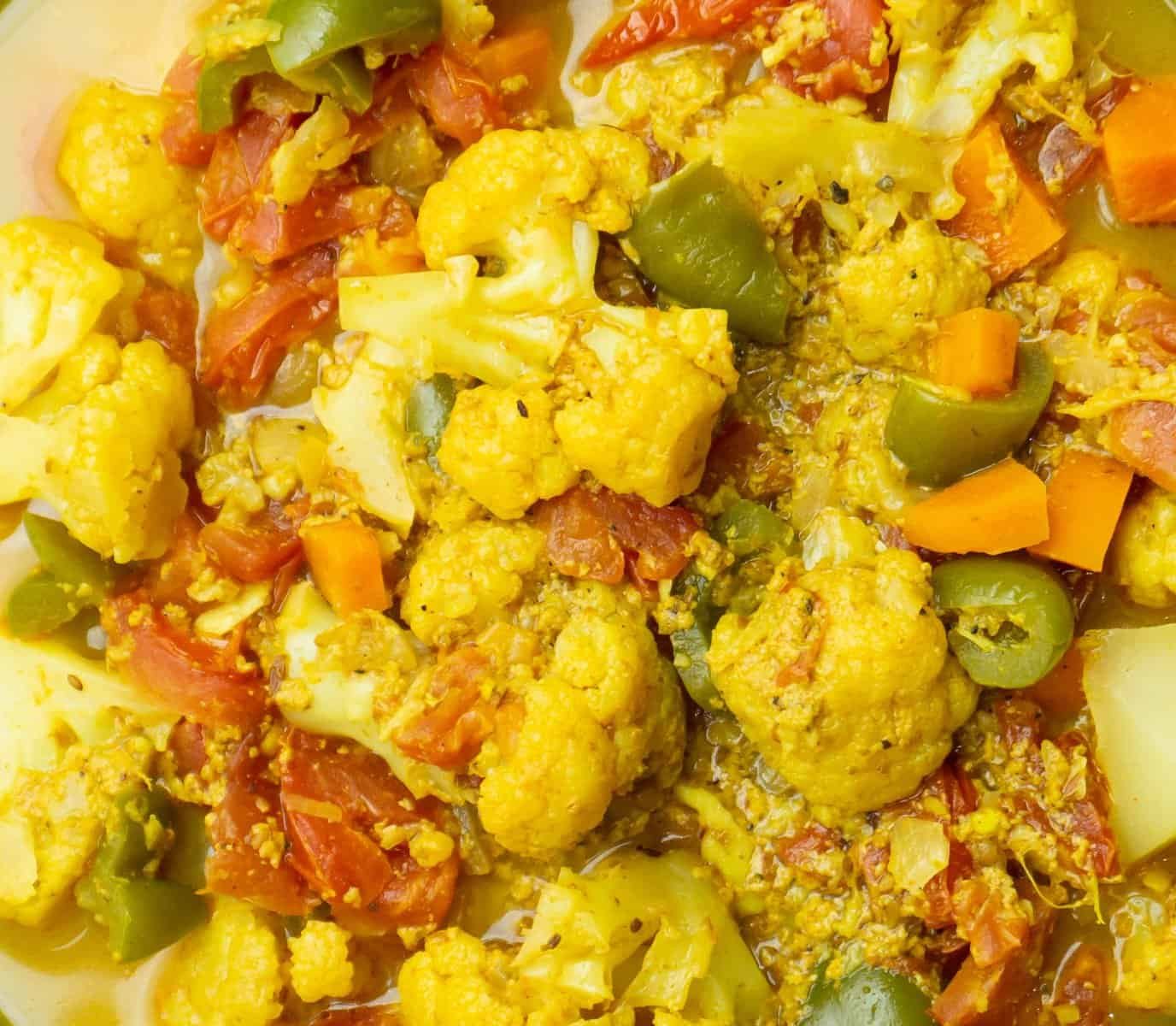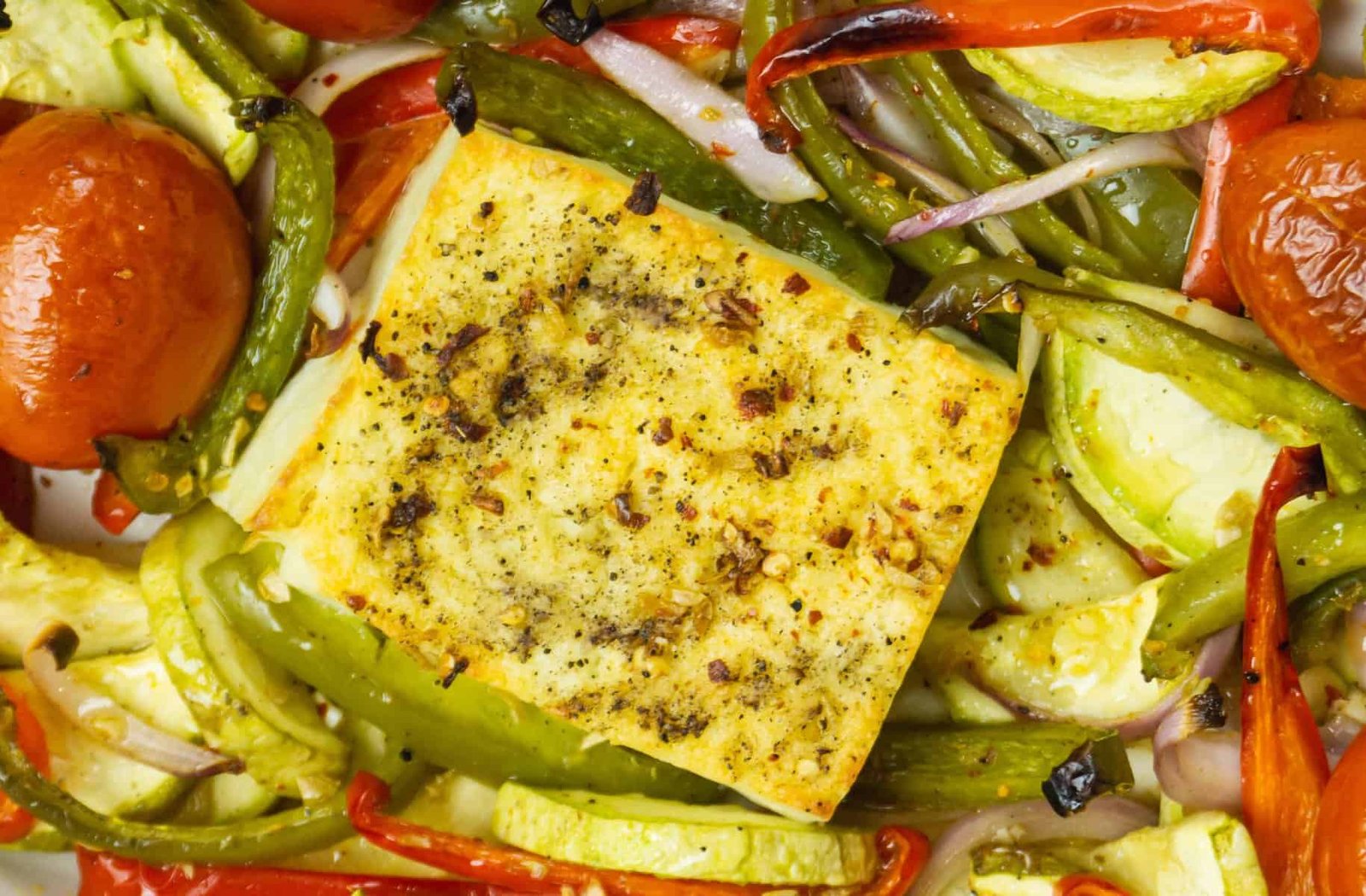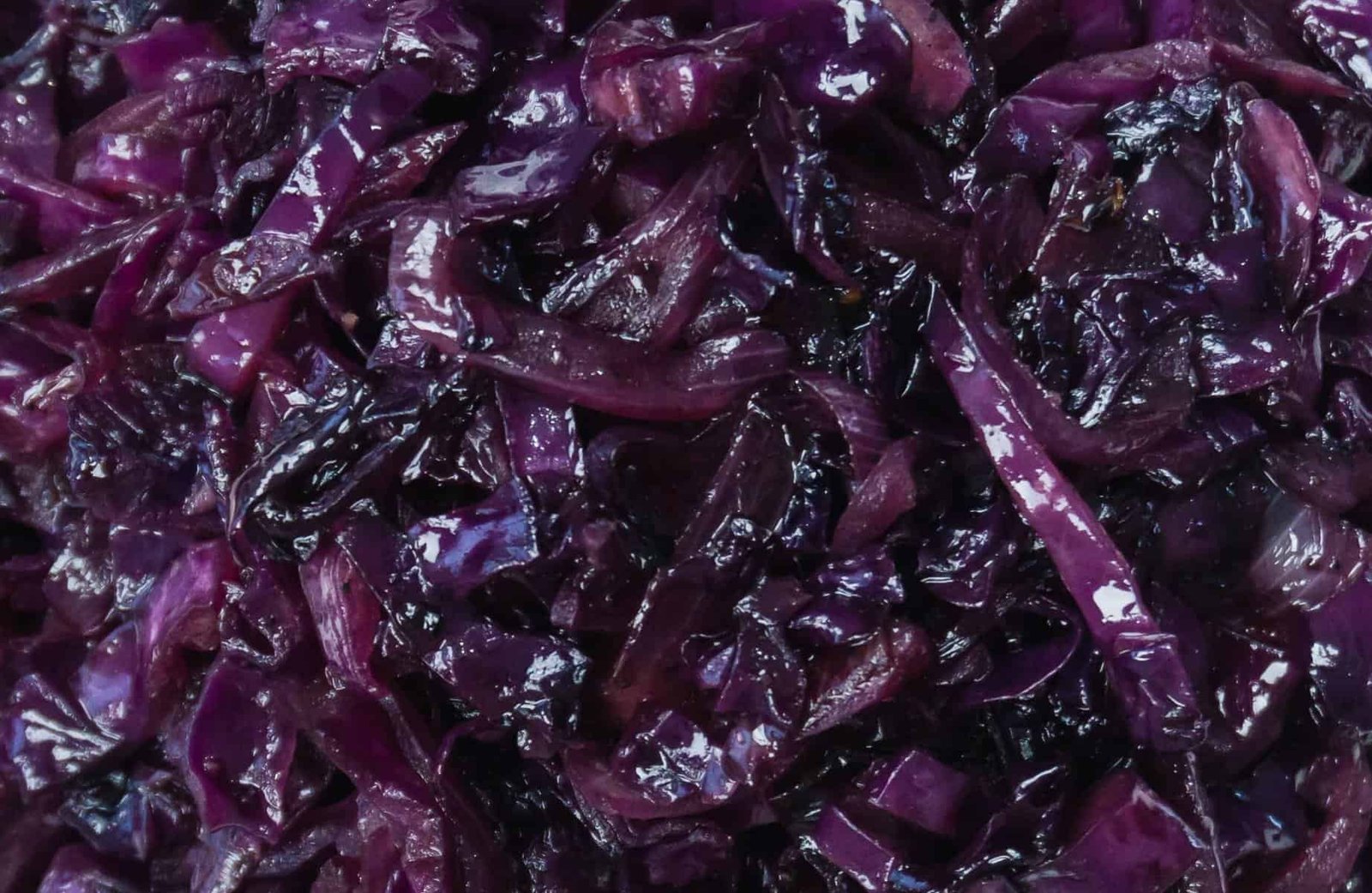Whether you’re a die-hard curry aficionado or new to Indian cooking, this Jaipuri Curry recipe is brimming with flavours synonymous with Indian cuisine.
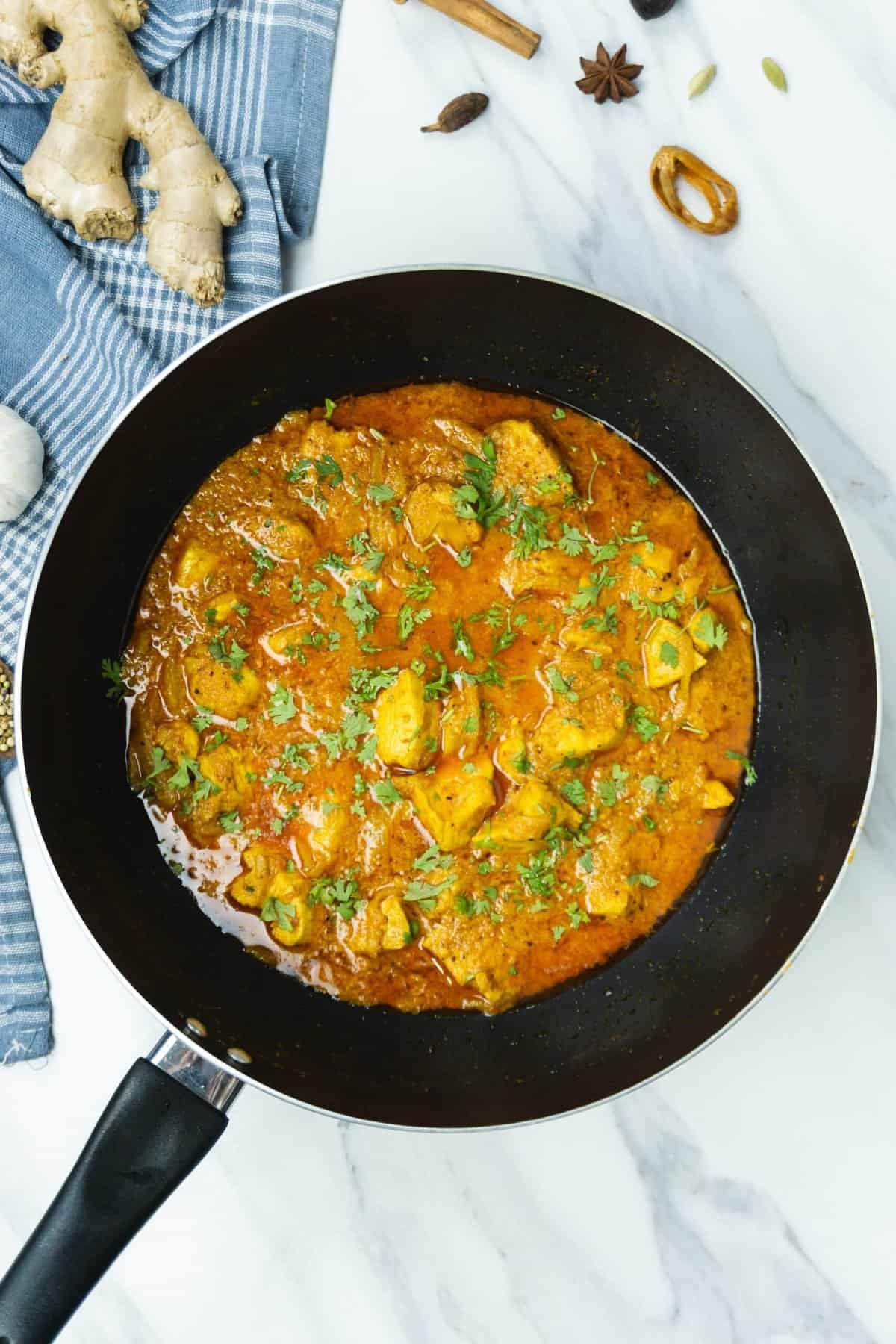
I’ve been inspired but the vibrant city of Jaipur in Rajasthan, India. I’m not going to lie, as is often the case, this is probably not completely authentic or traditional but it’s tasty nonetheless. It’s the perfect balance between warm, spicy and rich.
How to Make Jaipuri Curry
A detailed recipe with full quantities can be found in the recipe card at the bottom of this page.
Step 1: As with all curries, you’ll get the best flavour if you spend time toasting your spices first. All you need to do is get a pan nice and hot and then pop the spices into toast – no oil required!
Once your kitchen is full of the aroma of the spices, you can grind them in a spice grinder or using a pestle and mortar.
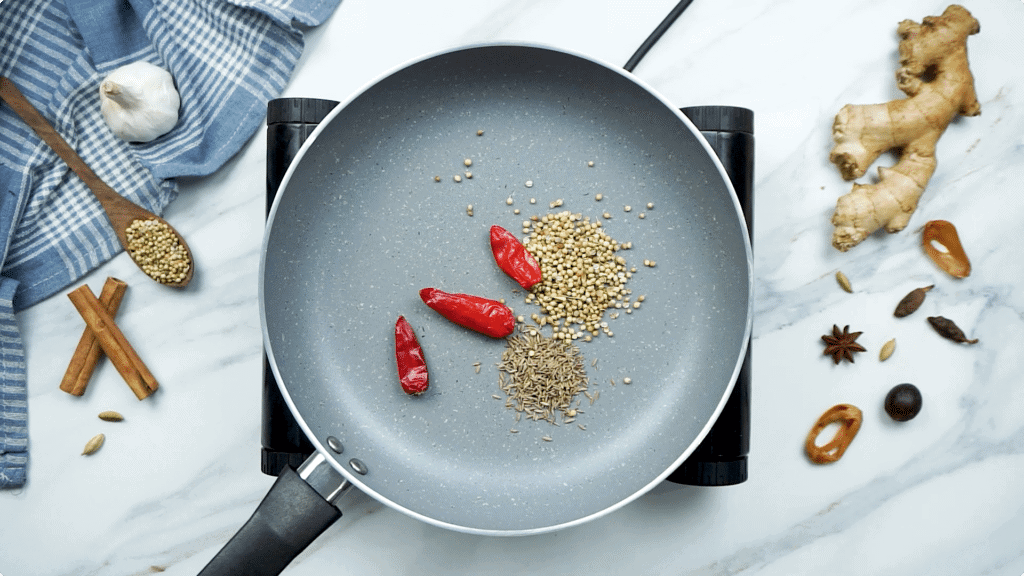
Step 2: I’d argue the next most important steps of any curry is the onion base. All too often, people quickly fry the base for a few minutes and then move on to the next step.
You want to saute them for 10 to 15 minutes until they release their sugars.
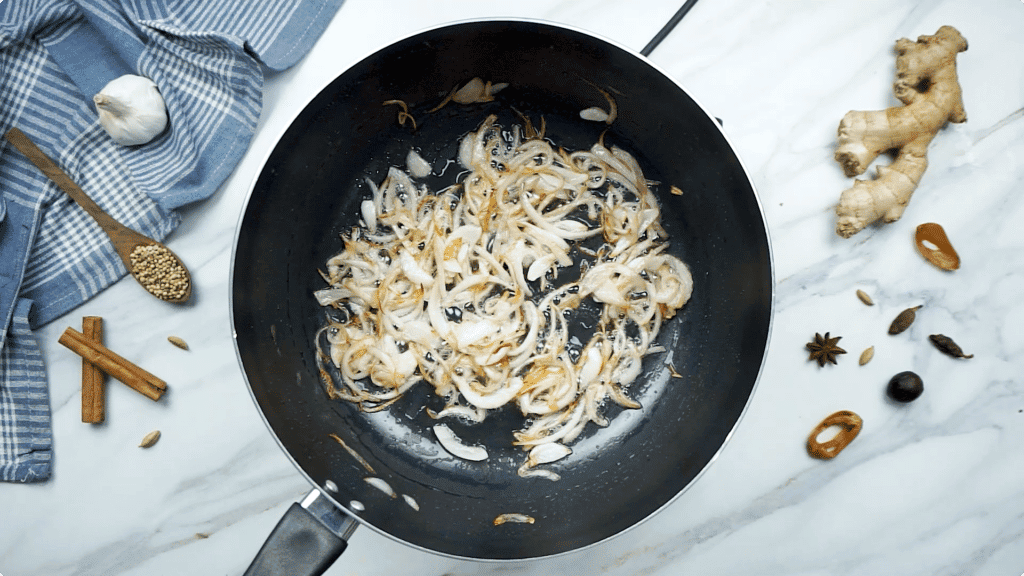
Once the onions have cooked down, you can add in your garlic and ginger and cook that for a matter of minutes – otherwise, you risk burning it.
Step 3: Now, you can add in your tomatoes. I like to use a tin of tomatoes, which I then puree myself but you can also use pureed tomatoes or passata – whatever you have to hand. You’ll also want to add in the spices you toasted previously at this point.
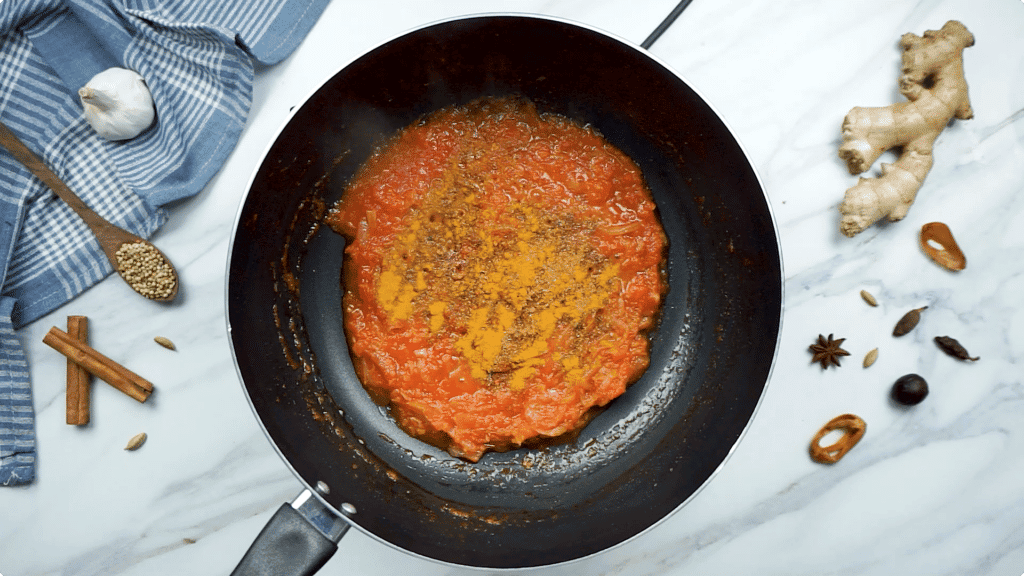
Step 4: Add in your chosen protein. You can use either chicken cubes or lamb pieces. If you want a vegetarian option then cubes of tofu will also work well here.
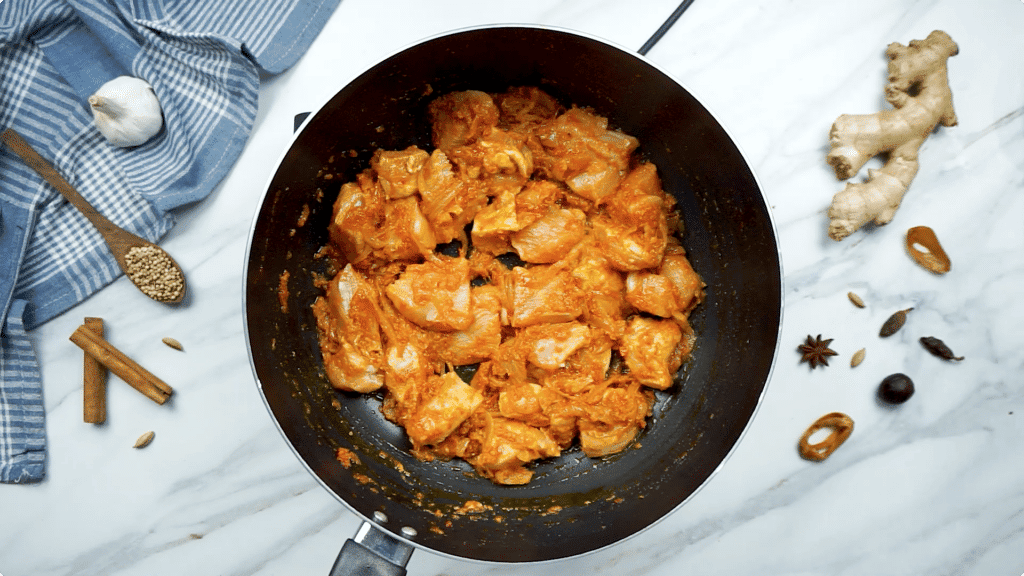
Step 5: This is where we make the curry creamy and velvety by adding in whisked yoghurt. Pour the yoghurt in and keep stirring the curry to prevent it from curdling.
Allow the curry to simmer for around 25 minutes. You may need to add a splash of water if the curry is drying up. You need enough liquid to poach the chicken until cooked through.
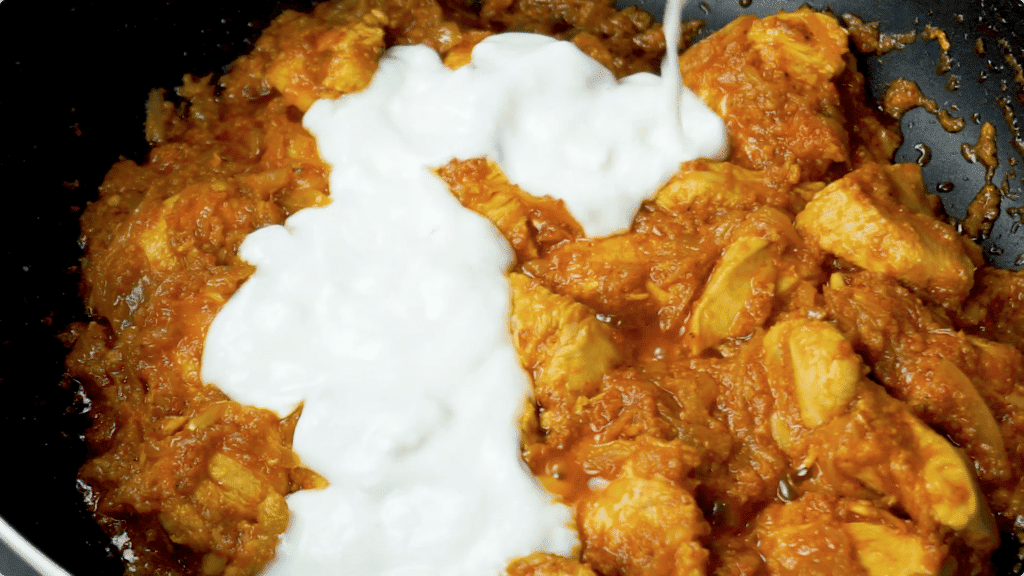
Step 6: Finally, check the season, add a sprinkle of garam masala and a pinch of chopped coriander and then enjoy!

Tweaks
Below are some tweaks you could make to this simple Jaipuri curry recipe that won’t take away from the main dish:
- Coconut Twist: Swap out the yoghurt for coconut milk to bring a tropical element into the dish.
- Leafy Greens: Add a cup of chopped spinach, kale or cavolo nero leaves during the simmering process for extra nutrition and a beautiful pop of colour.
- Tangy Tamarind: Add a teaspoon of tamarind paste along with the tomatoes for a tangy, sour kick.
- Seafood Edition: Replace the chicken or lamb with prawns or white fish for a pescatarian take on Jaipuri curry.
- Nutty Aroma: Add a spoonful of cashew or almond paste for a richer, creamier curry with a nutty aftertaste.
- Smoky Infusion: Char the onions and tomatoes on an open flame before pureeing them for a smoky flavour profile.
- Double Protein: Add some canned chickpeas and meat for additional protein.
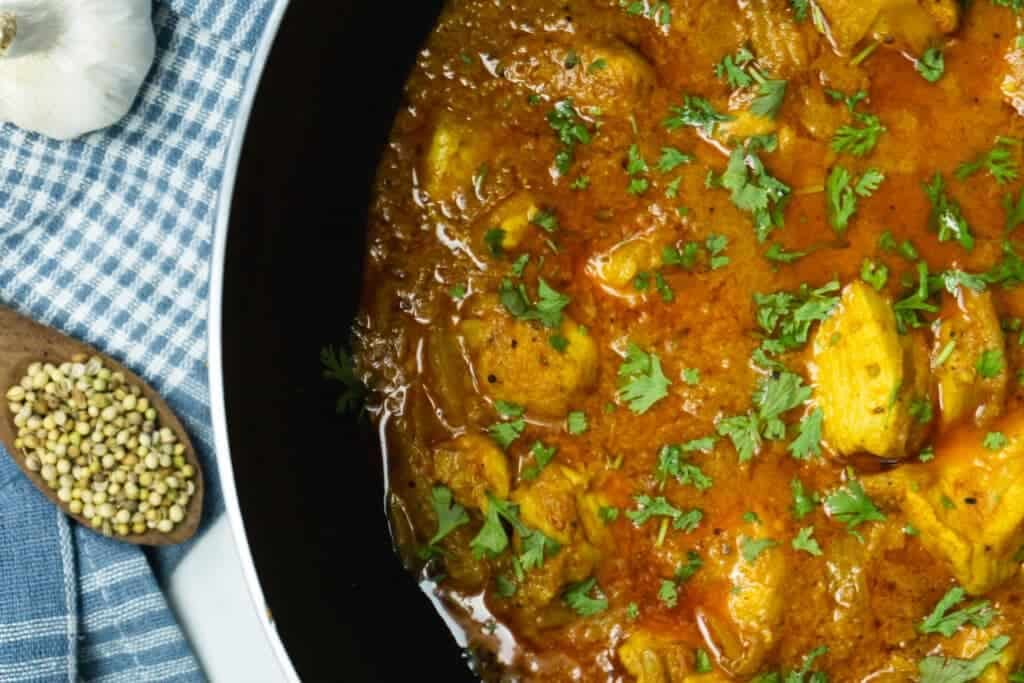
Storage
Fortunately, like most curries and stews, this is a great dish to batch-cook and then store. Below are all the details on how to store it:
Refrigerate: Store the cooled Jaipuri curry in an airtight container and place it in the fridge for up to 3-4 days. Always use a clean spoon to serve.
Freeze: To freeze, portion the cooled curry into airtight containers or resealable freezer bags. It will last for up to 2 months. Thaw in the fridge overnight before reheating.
Reheat: To reheat, place the thawed or refrigerated curry in a saucepan and warm it over low heat. If it’s too thick, add a splash of water to regain the original consistency.
What to Serve With Jaipuri Curry?
This dish pairs well with naan, rice, or even quinoa for a healthier option. You could even try our 3-ingredient flatbreads.

